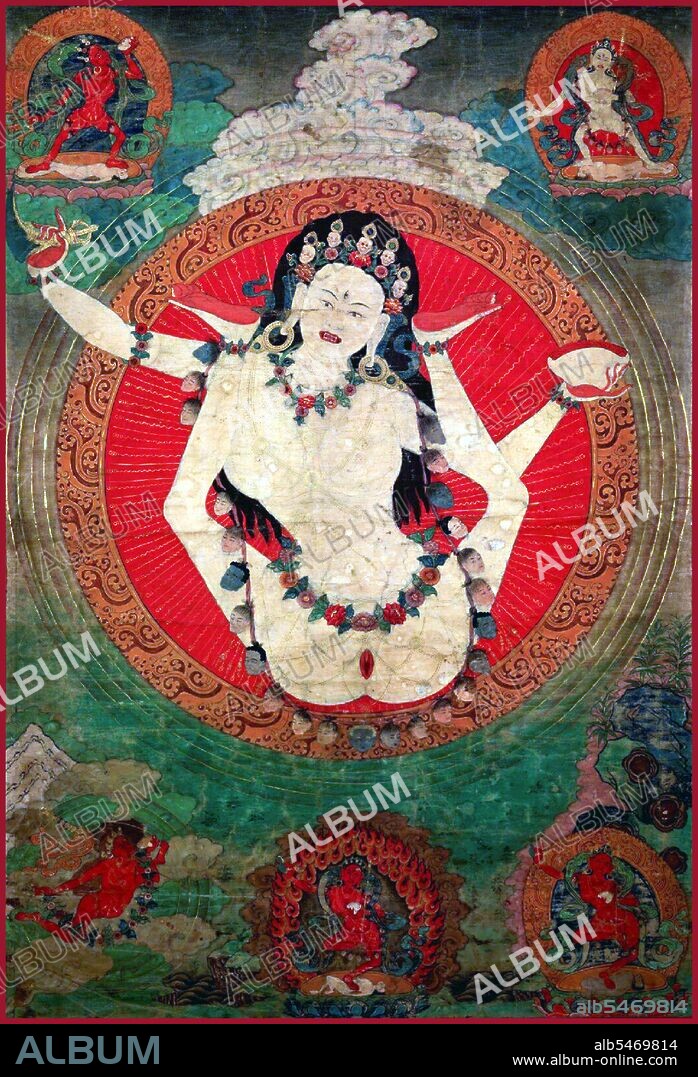alb5469814
China-Tibet: Painting of Sukhasiddhi Dakini,19th century

|
Añadir a otro lightbox |
|
Añadir a otro lightbox |



¿Ya tienes cuenta? Iniciar sesión
¿No tienes cuenta? Regístrate
Compra esta imagen

Título:
China-Tibet: Painting of Sukhasiddhi Dakini,19th century
Descripción:
Ver traducción automática
A dakini (Sanskrit: ?akini; Tibetan: khandroma) is a tantric deity described as a female embodiment of enlightened energy. In the Tibetan language, dakini is rendered khandroma which means 'she who traverses the sky' or 'she who moves in space'. Sometimes the term is translated poetically as 'sky dancer' or 'sky walker'. The dakini, in all her varied forms, is an important figure in Tibetan Buddhism. She is so central to the requirements for a practitioner to attain full enlightenment as a Buddha that she appears in a tantric formulation of the Buddhist Three Jewels refuge formula known as the Three Roots. Most commonly she appears as the protector, alongside a guru and yidam (enlightened being). Although dakini figures appear in Hinduism and in the Bön tradition, dakini are particularly prevalent in Vajrayana Buddhism and have been particularly conceived in Tibetan Buddhism where the dakini, generally of volatile or wrathful temperament, act somewhat as a muse for spiritual practice. Dakini are energetic beings in female form, evocative of the movement of energy in space. In this context, the sky or space indicates shunyata, the insubstantiality of all phenomena, which is, at the same time, the pure potentiality for all possible manifestations.
Crédito:
Album / Pictures From History/Universal Images Group
Autorizaciones:
Modelo: No - Propiedad: No
¿Preguntas relacionadas con los derechos?
¿Preguntas relacionadas con los derechos?
Tamaño imagen:
3450 x 5061 px | 50.0 MB
Tamaño impresión:
29.2 x 42.8 cm | 11.5 x 16.9 in (300 dpi)
Palabras clave:
 Pinterest
Pinterest Twitter
Twitter Facebook
Facebook Copiar enlace
Copiar enlace Email
Email
